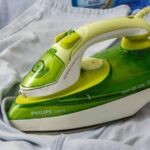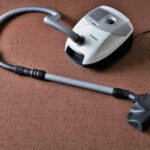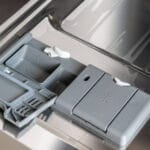If you have no laundry detergent and have run short of money, you might get the temptation to use dish soap in its place. You might also have the cash but limited time to run to the shop or order some online and do laundry later. Or it might just be a lingering desire to conduct the little experiment and see if you’ll be the person to discover the next genius cleaning hack. But can you really use dish soap to wash clothes?
Dish soap is meant for washing dishes. It cuts grease from plates, wooden spoons and bowls, plastic containers and even pots that are heavily coated with oil. Something else you should know, it is a reliable stain remover for grease stains on clothes.
Can you use Dish Soap to Wash Clothes?

You can actually use dish soap to wash your clothes. It has what it takes to remove light or heavy soiling from a wide range of fabrics. That said, it is important to be sure of whether your dish soap contains any bleaching elements. Bleach can cause permanent damage to some of your garments by removing color. You should also know that dish soap lathers more than laundry detergent. Excessive sudsing can cause an overflow in most machines but more particularly in HE washers.
How to Use Dish Soap to Wash Your Clothes
There are several ways that you can use dish soap safely to wash your clothes. For starters, dish soap is a handy solution for greasy stains. Secondly, you can use it to remove soiling from your clothes through handwashing and machine washing.
Method #1: Using Dish Soap to Remove Stains
If you were cooking, repairing your car or working from your garage and accidentally ended up with greasy stains on your clothes, dawn dish soap can quickly come to your rescue.
Step 1: Inspect your garment for stains and apply a drop of dish soap directly on each stain. Rub the stain gently with your fingers so that soap can cover the entire stain and get absorbed into the fabric fibers. Alternatively, scrub the stain gently in circular motion with a soft brush until dish soap covers the entire section.
Step 2: Set the garment aside and let it sit for 15 minutes.
Step 3: Wash as instructed on the care label.
Another way that you can use dish soap to remove greasy stains is by soaking a garment directly in a solution of water and dish soap. Let the garment sit in the solution for at least 30 minutes then hand wash.
Method #2. Hand Washing Clothes with Dish Soap
If you find yourself at the point of washing clothes with dish soap, the best approach to use is the handwashing method. In fact, this is the only method you should think about because dish soap can cause serious damage to your machine.
Step 1: Read the Care Tag
Begin by inspecting the care tags on your clothes to determine whether they are hand washable. Some care tags provide a symbol followed by the handling instructions. Others provide the symbol or the instructions only.
The symbol features a hand with the fingers immersed into a wash basin that is half filled with water. The care instructions say something like “hand wash only” or “warm hand wash separately”.
Step 2: Check your Dish Soap for Bleaching Components
Some dish soap brands including the most popular ones contain traces of bleach. Bleach is excellent for removing stains, brightening and disinfecting clothes and surfaces. On the other hand, it can ruin clothes permanently by causing excess fading or causing stains by removing color from some sections.
If your dish soap contains bleach, ensure that the clothes you intend to wash can be bleached safely.
Step 3: Spot Treat your Garments
Check your garments for stains. Choose an appropriate stain remover depending on the kind of stains you see. Some of the common stain removers include baking soda paste, bleach, toothpaste and vinegar. You can check our articles if you intend to remove Chapstick, fabric softener, detergent, eyeshadow, nail polish and playdough stains.
Step 4: Prepare your Hand Washing Solution
Combine warm water and dish soap in a wash basin. Do not put a lot of dish detergent into the water because it lathers a big deal, which can make you rinse your clothes multiple times.
Step 5: Do the Actual Washing
Soak your clothes into the solution and wash each garment at a time. Rub one part of a garment against another until all the dirt clears. Focus on spots and use a soft brush or your fingers to scrub them gently.
Step 6: Rinse
After you remove all the soiling, drain the tub or wash basin and add clean water. Rinse the garments repeatedly until they are no longer soapy. You can add a half cup of vinegar in this step to remove any lingering smells from your clothes. Just ensure that you do not add too much vinegar because it can leave its smell on your clothes.
Step 7: Dry
Follow the instructions on the care tag to dry your clothes. Depending on the tag, you can dry flat some garments, line dry others on a clothesline or dry everything in a tumble dryer.
Method #3: Machine Washing
Generally, machine washing clothes with dish soap is a bad idea. Dish soap has a reputation of foaming too much, something that works well with dish washing. Unfortunately, this is a bad thing for a washing machine and it can also be bad for your clothes.
For starters, massive foam causes overflow in washing machines and dishwashers (Do not dare satisfy the curiosity of using dish soap in a dishwasher). An overflow is not something to look forward to. Things can get messy if the suds get to the drain and other components of your washing machine.
Further, using dish soap repeatedly can leave a lot of residue on the ring around your washer drum. This leads to build up of soap scum.
Secondly, too much lather than your clothes can handle makes rinsing hectic. If you do not rinse your clothes multiple times, they are left with soapy residue, which makes them dingily over time. Soap that is not rinsed properly can also ruin the texture of some fabrics.
If you still want to wash clothes with dish soap in your washer with this information in mind, follow the step by step guide below.
Step 1: Read the Care Tag
Inspect the tag on your clothes to ensure that they are machine washable. Once you are done, sort them with colors. Separate whites from lights and darks, then separate lights from darks.
Step 2: Load your washer
Load your machine like normal. Next, add 2 teaspoons of dish soap in the laundry detergent compartment for a normal load and run the machine. If washing a small load, use one teaspoon soap and 3 teaspoons soap for a large load.
Step 3: Rinse
Run the clothes through the rinse cycle. You can add ½ cup of white distilled vinegar for softening and freshening purposes
Step 4: Dry
Dry as normal on a clothes rack, clothesline or in the tumble dryer.
Frequently Asked Questions
What is the difference between laundry detergent and dish soap?
In terms of how the two work, dish soap produces a lot of suds when compared to laundry detergent. Dish soap is also an excellent choice for cutting grease and grease stains. This makes laundry detergent ideal for washing clothes especially in the washer because it produces just enough suds. Excess foam from dish soap can wreck your washer with an overflow. On the positive side, you can treat greasy stains on fabric with dish soap.
What happens if you use dish soap instead of laundry detergent?
Using dish soap instead of laundry detergent causes a great deal of suds in the washer. If the suds are more than the machine can handle, it overflows. If the situation does not get this bad, you end up rinsing your load multiple times to remove excess soap.
Is it bad to wash clothes with dish soap?
It is not a good idea to wash clothes with dish soap. You are better off sticking to laundry detergent because it is the best solution for job. That said, if you find yourself in a situation that limits you to using dish soap, it is best to hand wash the clothes.
Is Dawn dish soap safe for fabric?
Dawn dish soap is safe for most fabrics. It can remove greasy stains as well as soiling. Even so, it is best to test it on a hidden part of your garment just to clear any doubts before using it to treat stains or wash the entire garment.
What can I use if I don’t have laundry detergent?
There are numerous alternatives for laundry detergent that are safe and environmental friendly. For starters, you can use ingredients such as washing soda, baking soda and borax to prepare homemade detergent. You can also use soap nuts. Other alternatives include dish soap, lemon water and vinegar.
Will dish soap ruin a washing machine?
Dish soap can ruin your washing machine by causing an overflow. If you have to use it, ensure that you use no more that 3 teaspoons for a large load. It is also important to limit the times you use it as much as possible.
Can you use dish soap to wash clothes by hand?
Hand washing is the safest way to use dish soap to wash clothes. With the kind of foam that a small amount of dish soap forms, hand washing allows you to keep the washing process in check.





